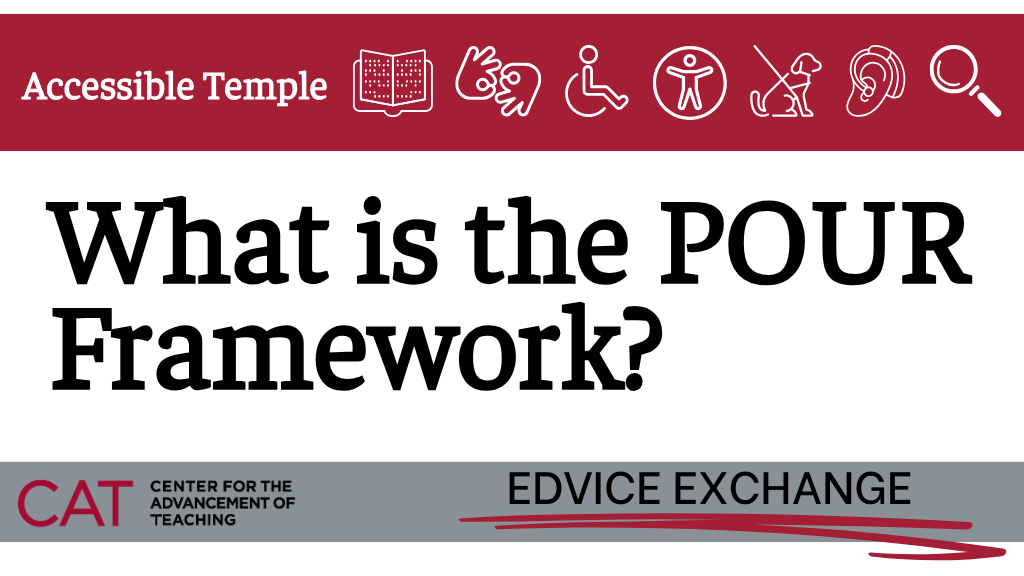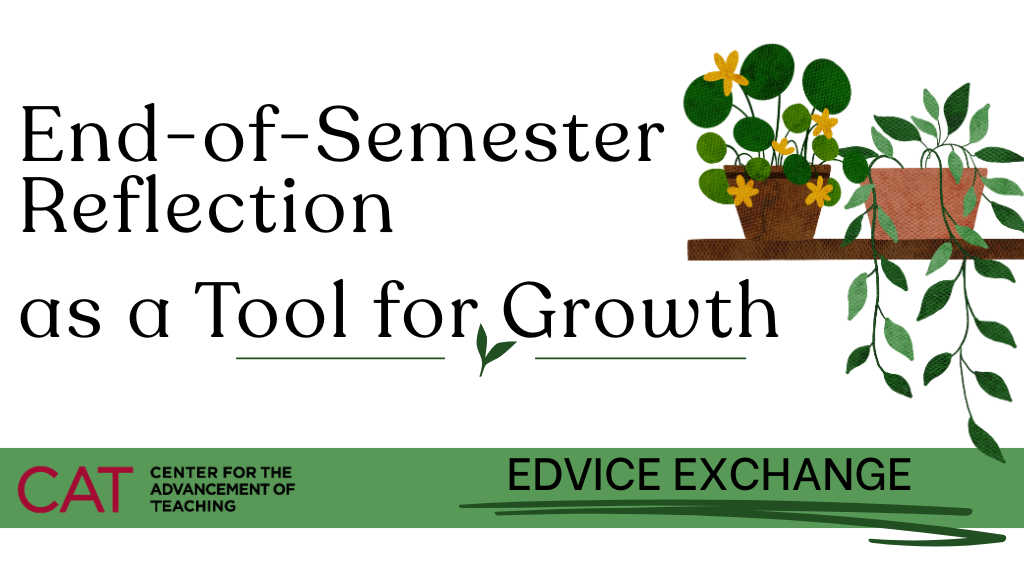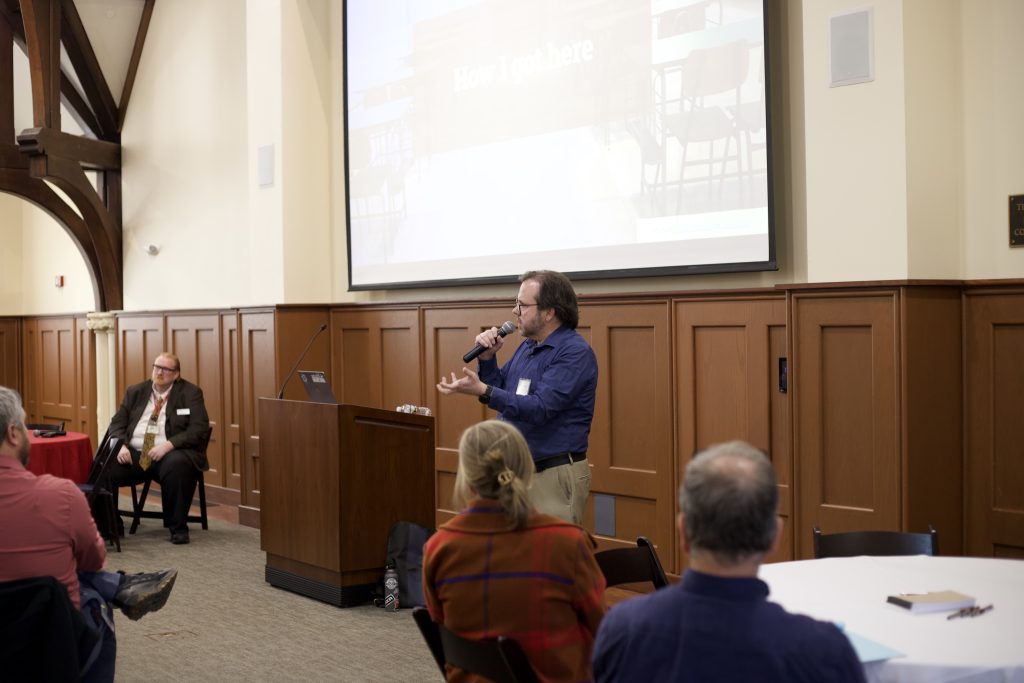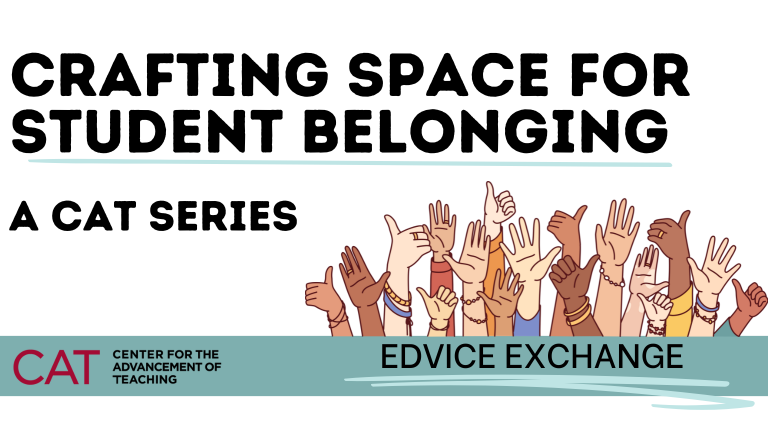by Jeff Rients

As we begin the Accessible Temple initiative, it is important to remember that accessibility isn’t just about meeting the legal requirements of the Americans with Disabilities Act. It’s about honoring the diversity of your students, creating equitable learning environments, and practicing the kind of teaching that anticipates and celebrates differences instead of reacting to them. Rather than seeing accessibility as a set of compliance checkboxes or technical challenges, we invite you to see it for what it really is—an essential part of good teaching.
At the heart of the Accessible Temple push to bring our materials up to ADA standards is a simple, powerful framework known as POUR. POUR stands for Perceivable, Operable, Understandable, and Robust—four principles that guide how we can create content that works for everyone, not just students with formal accommodations.

Let’s break this down:
P: Perceivable
Students must be able to perceive the information presented. What we have in the past provided in just one format (e.g. text) needs to be available in others. This includes providing text alternatives for images (a.k.a. alt text), captions for videos, and sufficient color contrast between text and background.
Why it matters for all learners: Good contrast helps students working in bright light or on old monitors. Captions help English language learners, students studying in noisy environments, or anyone reviewing material on mute.
O: Operable
Students must be able to interact with your materials beyond a traditional keyboard and mouse/trackpad setup. We all too often assume that students will navigate our courses with the exact same tools and methods that we use to build them, and that is not always the case. That means your course should be navigable by keyboard, links should be clearly labeled, and nothing should rely solely on hover or click effects.
Why it matters for all learners: Students with motor disabilities or repetitive stress injuries aren’t the only ones who benefit. Keyboard navigation helps mobile users and even power users who prefer keyboard shortcuts.
U: Understandable
Content must be presented in ways that are clear and predictable. All too often the structure of our course and the purpose of our assignments is clear to us but not fully articulated to students. This includes using consistent layouts (such as Canvas modules), plain language, and providing instructions that are easy to follow.
Why it matters for all learners: Students are balancing a lot. If your syllabus is confusing or your assignment instructions are vague, you’ll lose time answering repeat questions—and students may lose confidence or motivation.
R: Robust
Materials must be compatible with current and future technologies. We can’t predict the tools our students will use to interact with our course content. This means using formats that work across browsers and screen readers and avoiding broken links or outdated plugins.
Why it matters for all learners: Everyone benefits when course materials just work—especially students accessing materials from older devices, slower connections, or assistive technologies.
What This Means for You
Here’s the good news: many of the things that make your course accessible are the same things that make your teaching more effective, your students more confident, and your time better spent. And you don’t have to overhaul everything at once. Small, intentional changes—like using built-in heading styles in Word or uploading videos in Panopto to allow for auto-captioning—can make a huge difference.
Over the coming weeks, we’ll be rolling out tools, workshops, and one-on-one support to help you align your course materials with the POUR Framework. Whether you teach online, hybrid, or face-to-face, these practices apply.
We’re not asking for perfection—we’re building a culture of care and continuous improvement. When we design with POUR in mind, we’re not just complying with a set of guidelines—we’re investing in pedagogy that works for everyone.
Ready to get started? Check out our Accessible Temple web page or sign up for an upcoming workshop. Have questions? Email us. We’re here to help!
Jeff Rients, Ph.D, serves as Associate Director of Teaching and Learning Innovation at Temple University’s Center for the Advancement of Teaching.





